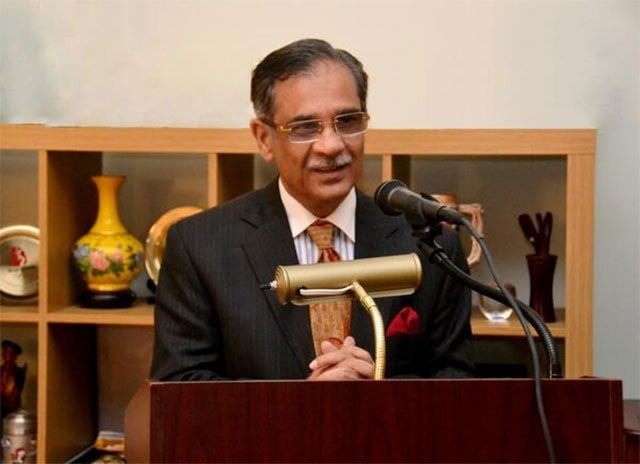
The CJP reconstituted a bench, hearing various public interest cases at the SC Peshawar Registry on May 9, 2018. The bench headed by the CJP earlier comprised Justice Isa and Justice Mansoor Ali Shah. However, during the hearing, the CJP announced reconstitution of the bench by excluding Justice Isa.
Later, Justice Isa issued a three-page note, raising serious questions over reconstitution of the bench. After the passage of seven months, Justice Mansoor Ali Shah has also endorsed Justice Isa’s objections.
“The reconstitution of the two-member bench and the proceedings before the said bench on 9th May, 2018 in all the cases fixed before it are void and non-est. I agree with my learned brother Qazi Faez Isa, J that the reconstitution of the bench by the Hon’ble Chief Justice in the present case is unwarranted and unprecedented and undermines the integrity of the system,” he says in a six-page note.
Justice Shah says in the absence of a recusal by a member of the bench, any amount of disagreement amongst the members of the bench on an issue before them, cannot form a valid ground for reconstitution of the bench, adding that any reconstitution on this ground would impinge on the constitutional value of independence of judiciary.
He said the construction of a judicial system is pillared on the assumption that every judge besides being fair and impartial is fiercely independent and is free to uphold his judicial view. This judicial freedom is foundational to the concept of Rule of Law.
“Reconstitution of a bench while hearing a case, in the absence of any recusal from any member on the bench or due to any other reason described above, would amount to stifling the independent view of the judge.
“Any effort to muffle disagreement or to silence dissent or to dampen an alternative viewpoint of a member on the bench would shake the foundations of a free and impartial justice system, thereby eroding the public confidence on which the entire edifice of judicature stands,” he says.
The judge admits that his sitting on the reconstituted two-member bench was a mistake and having realised that after examining the legal position, he did not sign the orders passed by the reconstituted two-member bench “and as a junior member of the bench, awaited for the Hon’ble Chief Justice to pass an appropriate order in response to the order of my learned brother Qazi Faez Isa.”
The judge believes that a bench, once it is constituted and is seized of a matter on the judicial side, cannot be reconstituted by the CJP in exercise of his administrative powers unless a member(s) of the bench recuses or for reasons discussed above.
Justice Shah says the Supreme Court 1980 Rules provides for administrative powers of the chief justice to constitute benches. However, once the bench is constituted, cause list is issued and the bench starts hearing the cases, the matter regarding the constitution of the bench goes outside the pale of administrative powers of the chief justice and rest on the judicial side, with the bench.
“Any member of the bench may, however, recuse to hear a case for personal reasons or may not be available to sit on the bench due to prior commitments or due to illness. The bench may also be reconstituted if it is against the rules and requires a three-member bench instead of two,” he says.


















COMMENTS
Comments are moderated and generally will be posted if they are on-topic and not abusive.
For more information, please see our Comments FAQ